Medeek Electrical
-
Version 1.2.3 - 10.20.2020
- Created the initial framework of the Medeek Electrical Estimating Module.
- Added wiring to the Medeek Electrical Estimator.
- Added the ability to export data from the Medeek Electrical Estimator in CSV format.
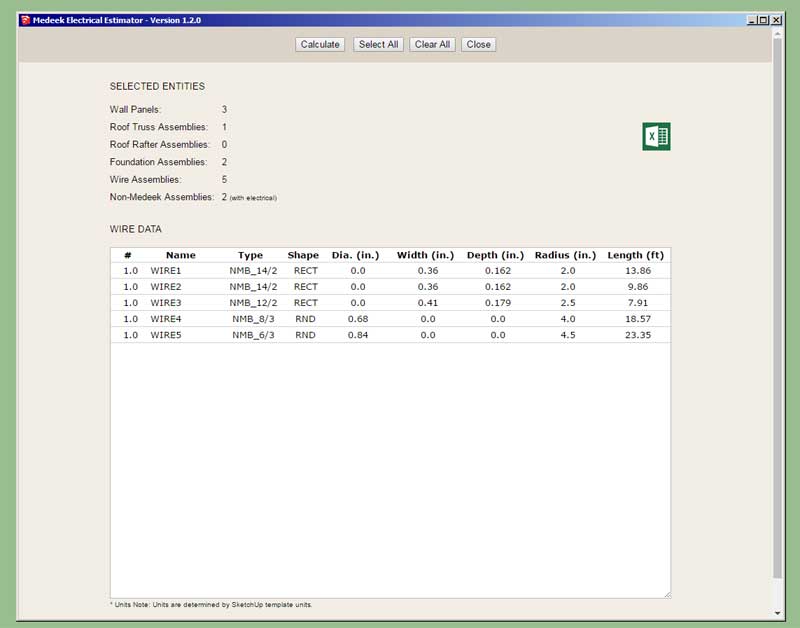
I also need to figure out what sort of CSI numbering to assign electrical components.
-
In the example shown below I've color coded my network cables based on whether they service the first or second floor of the building. The red cable is the designated switch-to-switch or router-switch cabling:



Note that the totals allows me to determine my cable amounts for each floor. I'm also able to determine that each cable run does not exceed a max. length.
View model here:
3D Warehouse
3D Warehouse is a website of searchable, pre-made 3D models that works seamlessly with SketchUp.
(3dwarehouse.sketchup.com)
Once I created all of my cable paths I dropped them onto a separate layer so I could easily hide them (and keep them around for future use if needed) once my wires were created.
-
Version 1.2.4 - 10.22.2020
- Added outlets and switches to the Medeek Electrical Estimator.
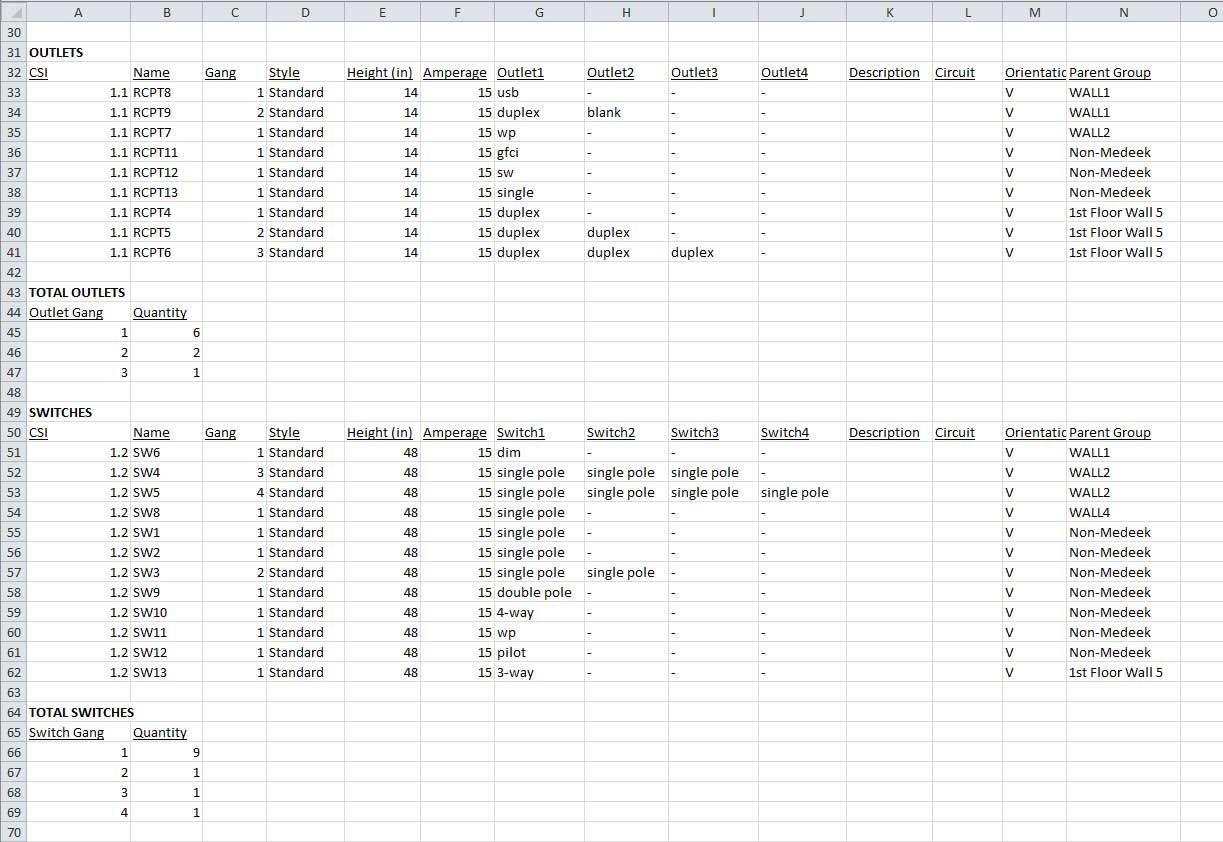
-
First look at UK electrical outlets and switches in the electrical estimator:

-
Version 1.2.5 - 11.12.2020
- Added data (low voltage) outlets, lights, panels, UK outlets, and UK switches to the Medeek Electrical Estimator.
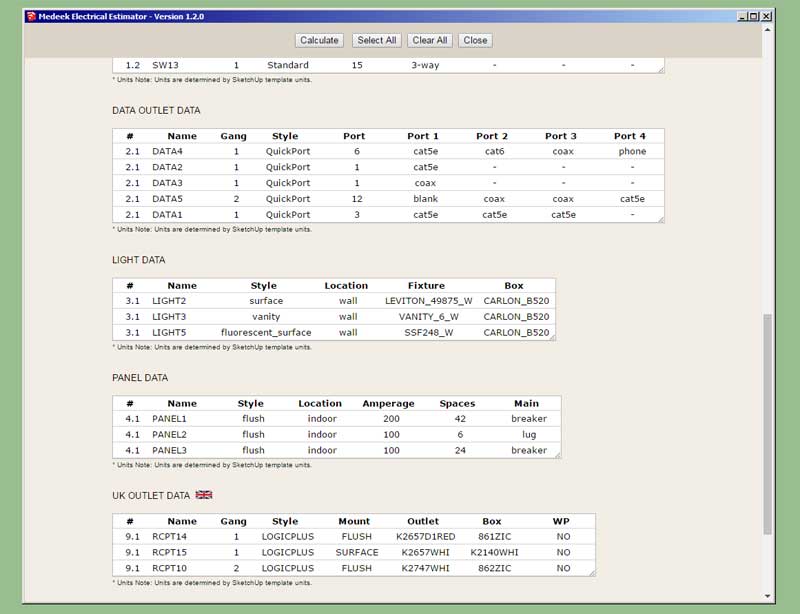
The following (six) electrical elements still need to be added into the Electrical Estimator:
Safety Devices, Heaters, Vents, Floor Outlets, Low Voltage Panels, Misc. Fixtures
-
Version 1.2.6- 11.13.2020
- Added Safety Devices, Heaters, Vents, Floor Outlets, Low Voltage Panels and Misc. Fixtures to the Medeek Electrical Estimator.
The Electrical Estimator is now complete. I still need to change up the CSI numbers for the various components but for now I've just used my own default numbering system. I will need to get with some electrical contractors on what are the appropriate numbers to use.
I will now turn my attention to more pressing matters involving the Truss plugin.
-
Version 1.2.7 - 02.13.2021
- Enabled the ability to draw outlets and switches with Medeek Polyline Stemwall assemblies.
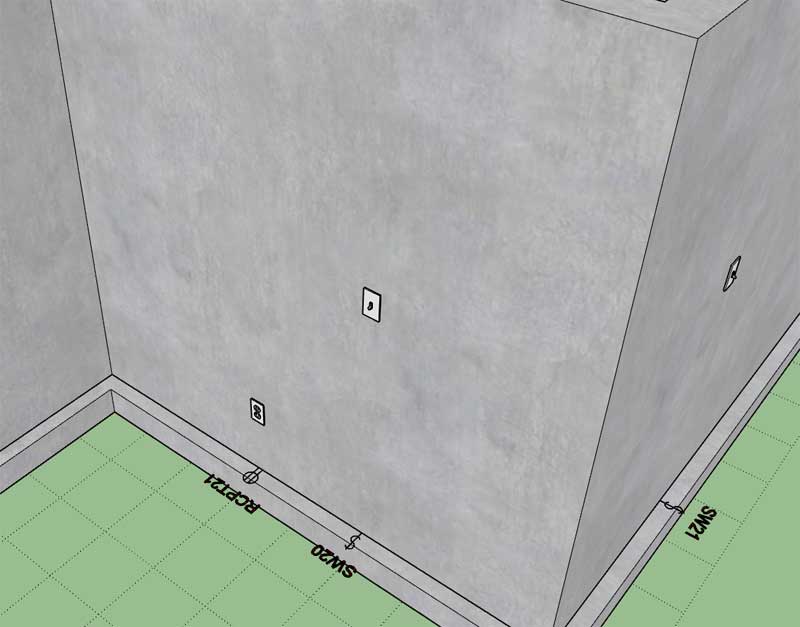
-
Version 1.2.7b - 02.13.2021
- Enabled the ability to draw UK outlets and switches with Medeek Polyline Stemwall assemblies.
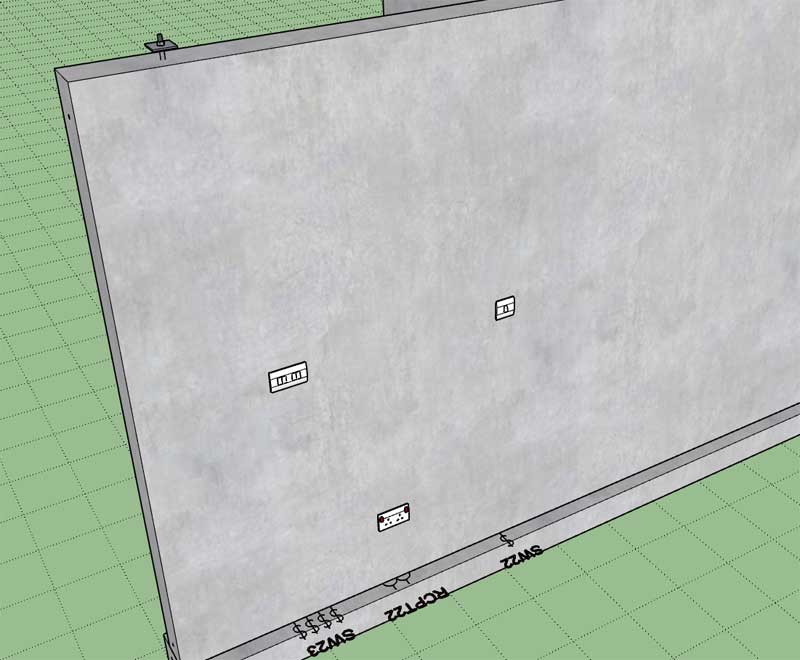
-
Version 1.2.8 - 04.30.2021
- Added optional metadata parameters for UK outlets and switches: description, circuit.
- Added a circuit callout parameter in the General tab of the global settings.
- Added a 5th dimensioning layer specifically for circuit callouts in the Layers tab of the Global Settings.
- Enabled circuit callouts for the following fixtures: Switches, Outlets, UK Switches and UK Outlets.
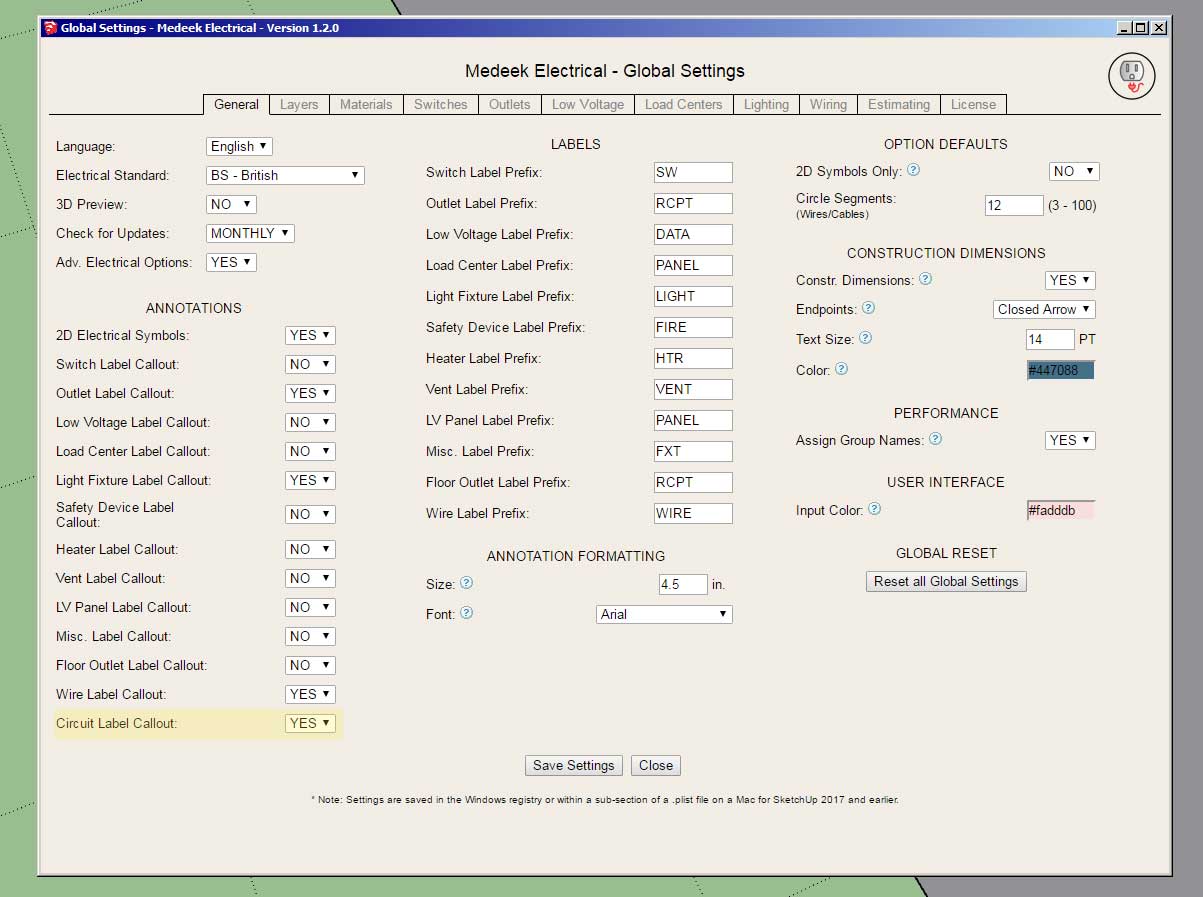
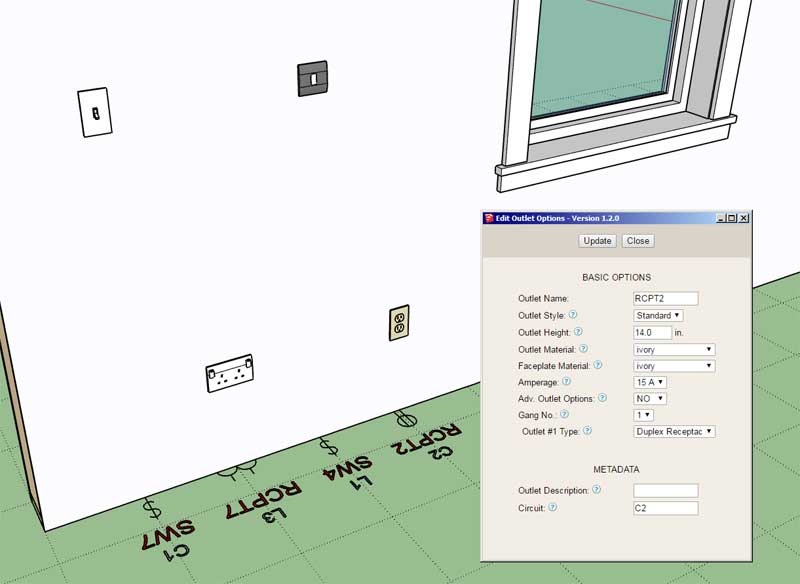
-
Version 1.2.9 - 05.30.2021
- Added an option for vertically offsetting text and symbols within the General tab of the Global Settings.
- Annotation text and symbols for outlets, switches, UK outlets and UK switches can be vertically offset a custom amount from the bottom of the wall.
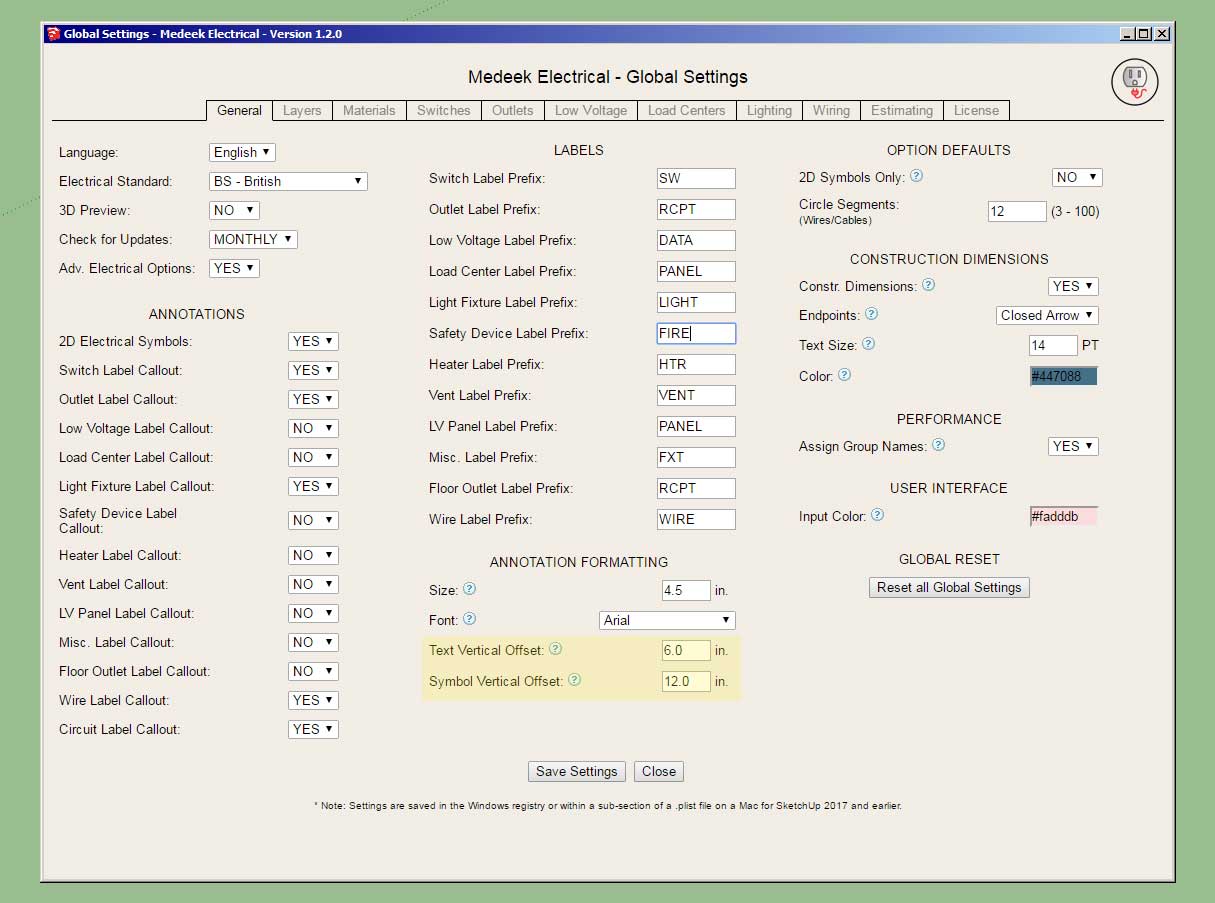
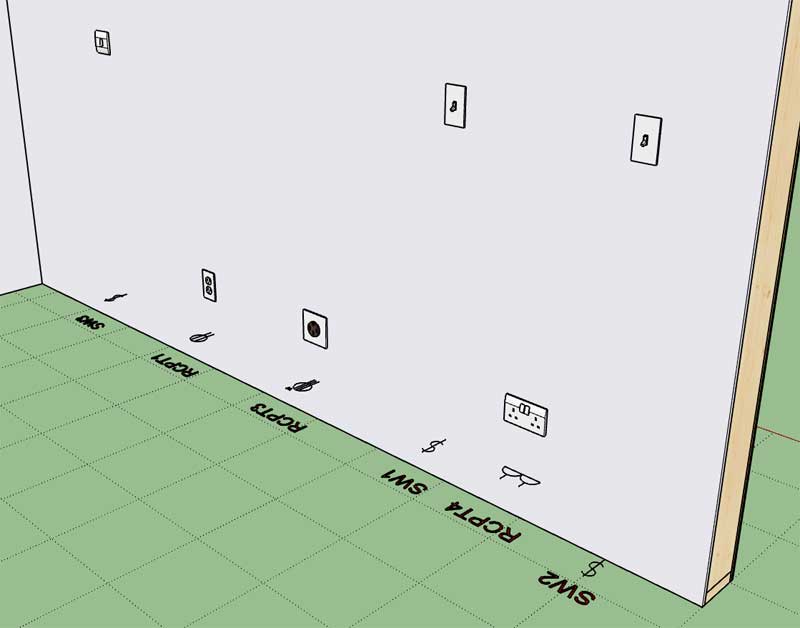
The default placement was at the bottom of the framed wall, and the default offsets still are zero unless otherwise specified differently. However in most situations this resulted in Z-fighting with the subfloor and if a finished floor was modeled then the symbols and text would be buried within the finished floor or carpet (not visible). This option allows the user to customize the vertical placement to suit their particular needs.
This update was per customer request.
-
Version 1.3.0 - 06.01.2021
- Added four additional parameters to the "User Interface" section of the General tab of the global settings. This allows the customization (colors) of the HTML menus and buttons.
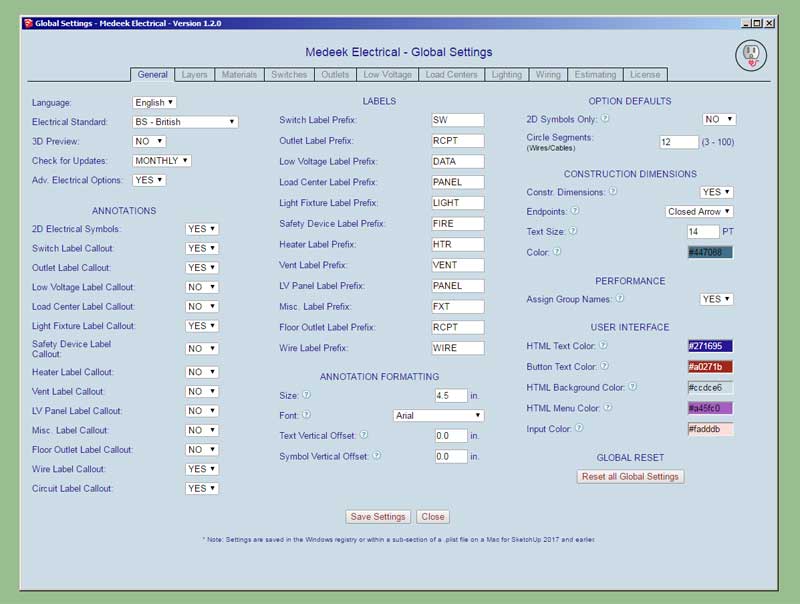
-
Version 1.3.1 - 06.16.2021
- Updated the wiring module/algorithm to improve performance and overall robustness.
-
Version 1.3.2 - 07.11.2021
- Enabled subscription and permanent licensing.
- The License tab of the Global Settings now displays the license type.
-
Version 1.3.3 - 01.11.2023
- Enabled layer control integration with the Medeek Project extension.
-
Version 1.3.4 - 06.13.2023
- Enabled switches, outlets and lights to be inserted into "component" walls.
Previously electrical fixtures could only be inserted into walls that were "groups", with this update the wall assemblies can be either groups or components.
This update per customer request.
P.S.
I will still need to update the other misc. electrical fixtures (ie. panels, low voltage, safety, heaters, vents, low voltage panels etc...) -
Version 1.3.5 - 09.29.2023
- Added six additional dimmer switch combinations.
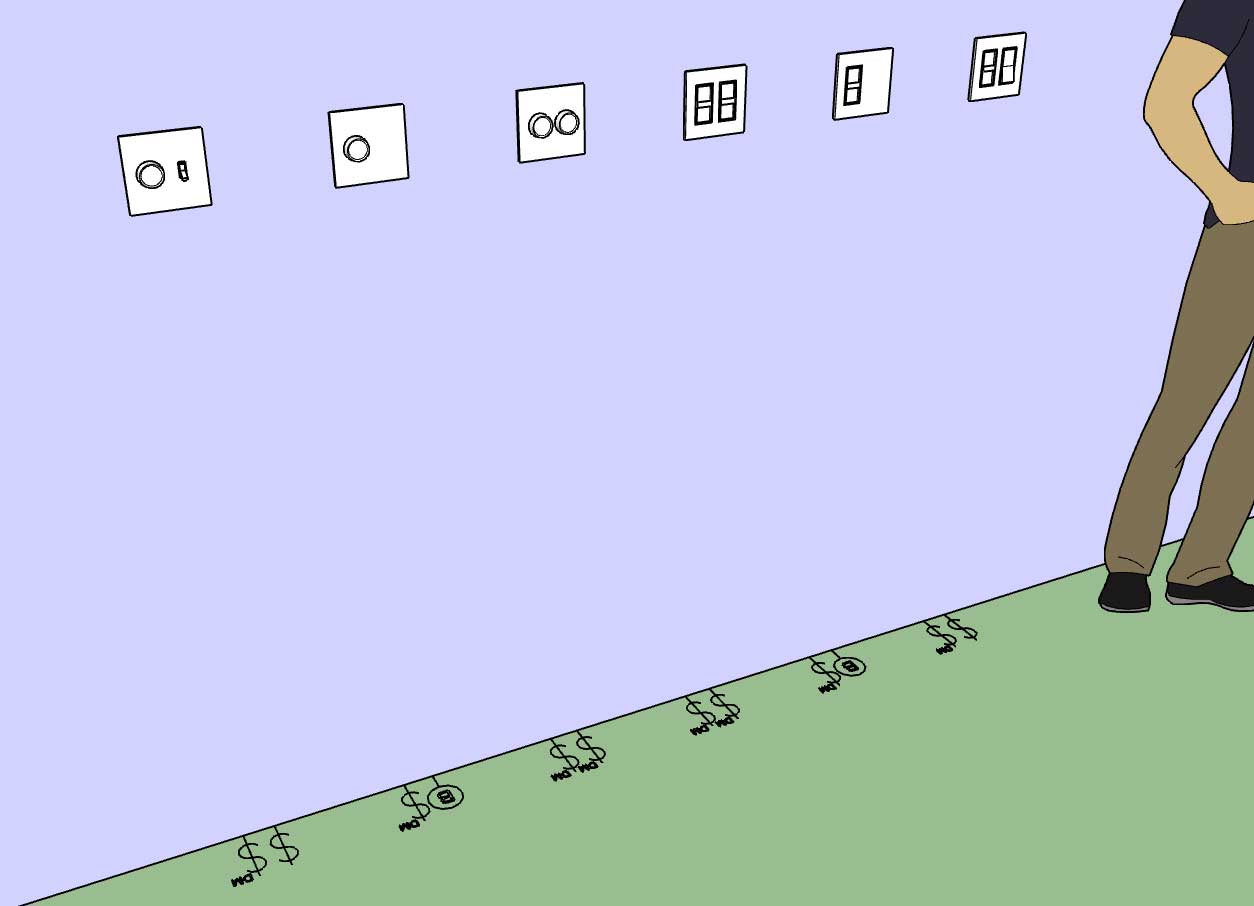
This update per customer request.
-
Version 1.3.6 - 10.04.2023
- Added an offset parameter (advanced options) for outlets which allows the symbol and label to be offset from the wall.
- Added two additional advanced parameters for vertically offsetting text and symbols for switches and outlets.
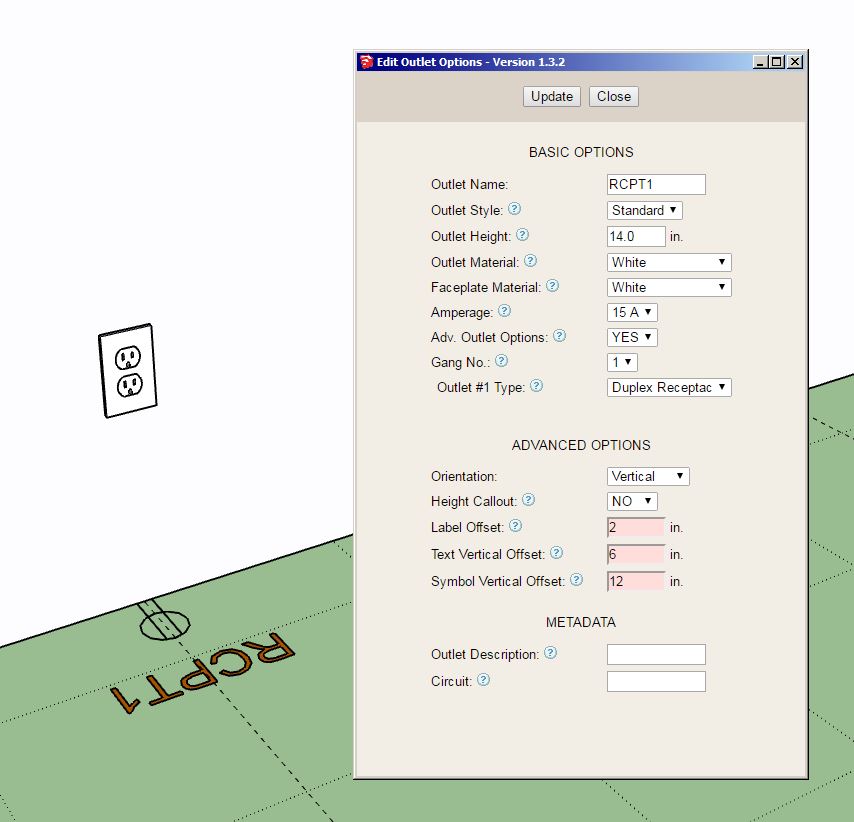
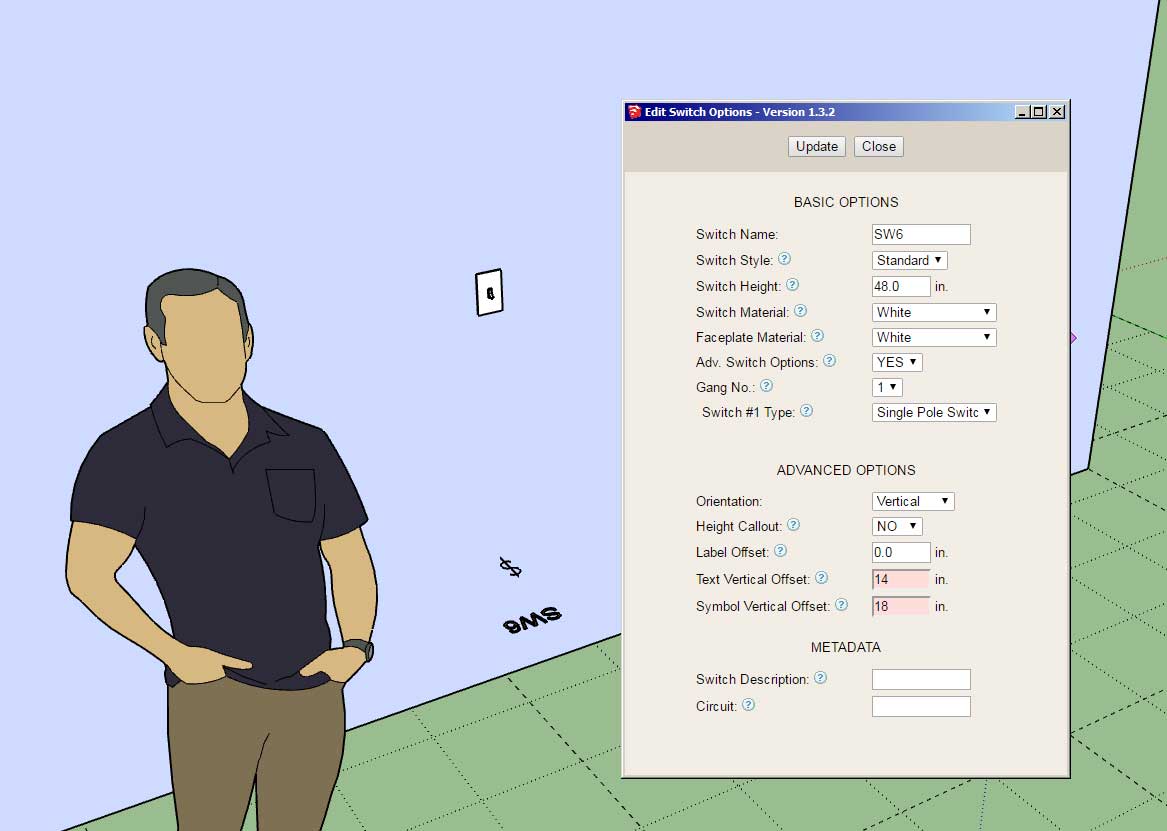
The text and symbol vertical offsets are driven by the global settings however these two parameters can now be adjusted separately for each individual outlet or switch.
This update is per customer request.
-
Version 1.3.7 - 10.14.2023
- Added four timer switch combinations (Leviton VPT24-1PZ).

Added per customer request.
-
Version 1.3.8 - 11.22.2023
- Added two additional parameters for annotation formatting.
- Added the "Regen Electrical" function to the primary toolbar, enabled regeneration for all electrical fixtures.
- Moved the "Draw Safety Device" tool to the secondary toolbar.
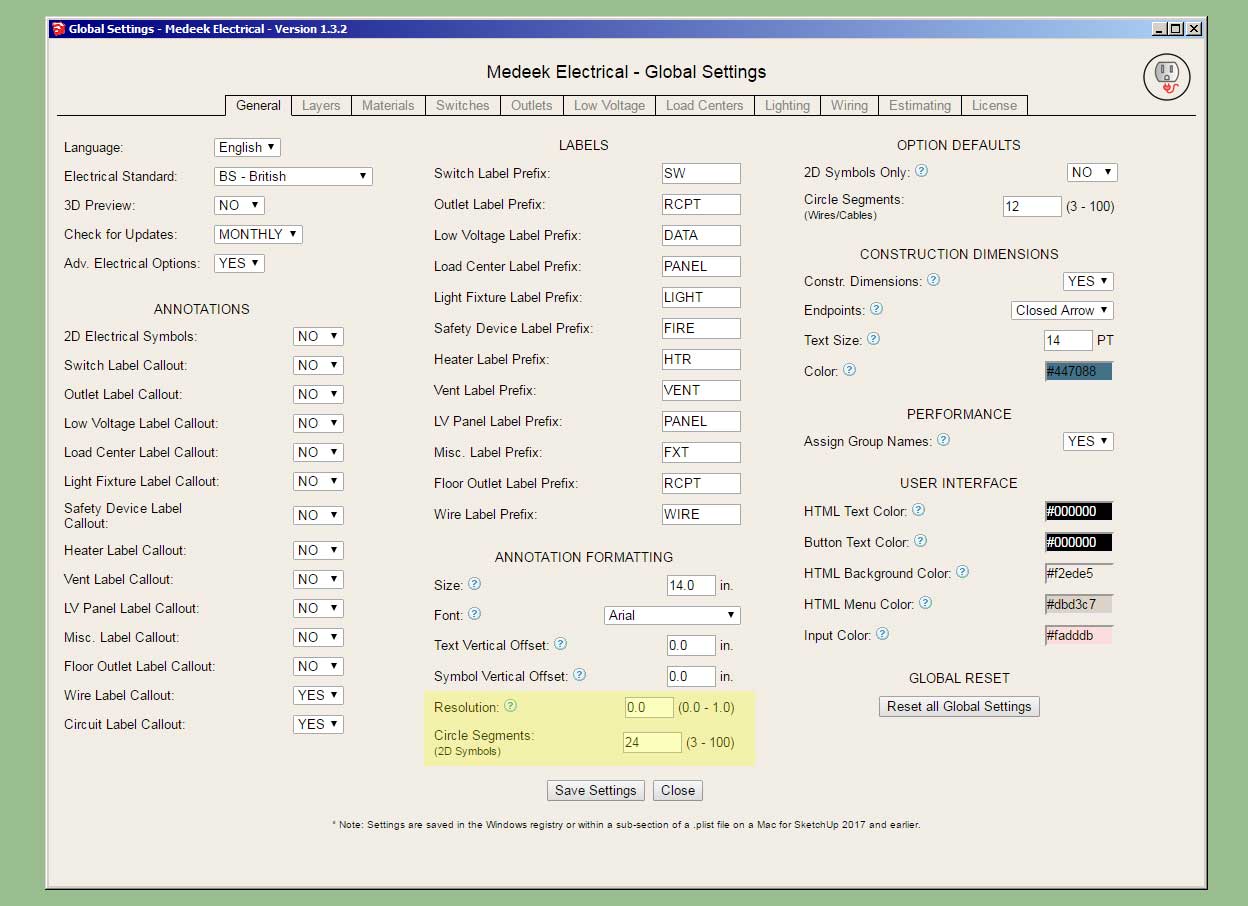


-
Version 1.3.8b - 11.23.2023
- Added the "Symbol Text Scale" parameter for scaling superscript of 2D electrical symbols.

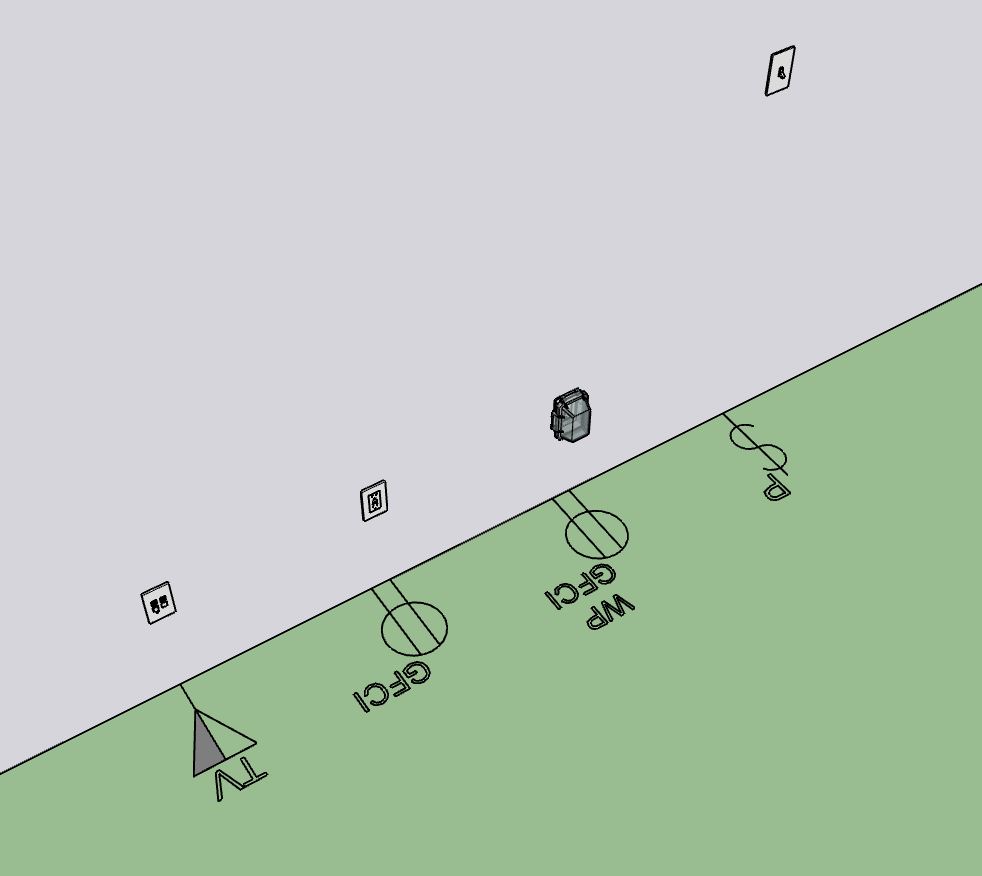
This update per customer request.
With this update one can scale the 2D symbol superscript of the electrical symbols and make them more visible and legible when exporting to Layout, PDFs or paper.
Advertisement








